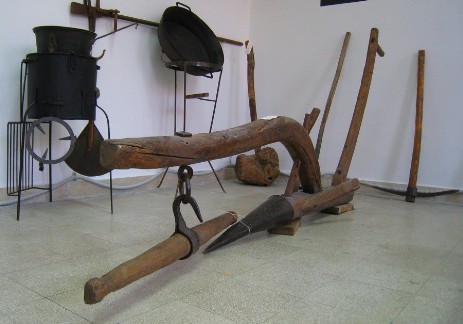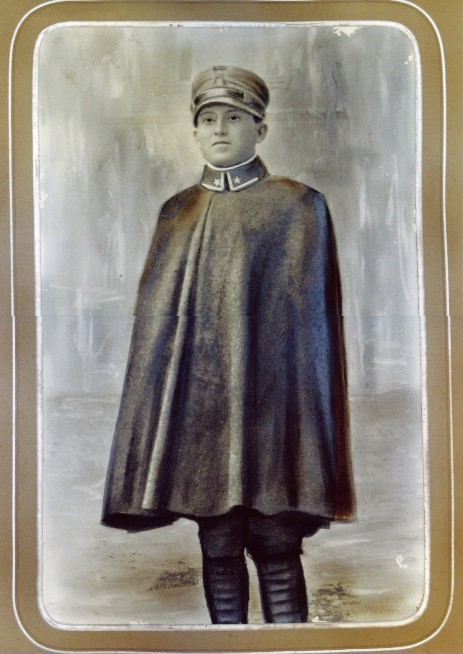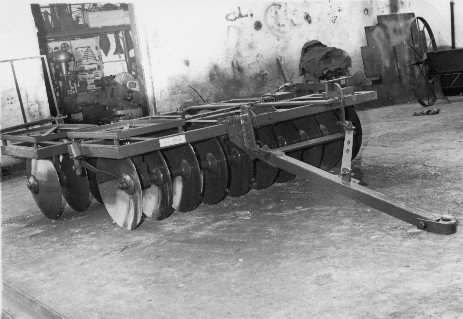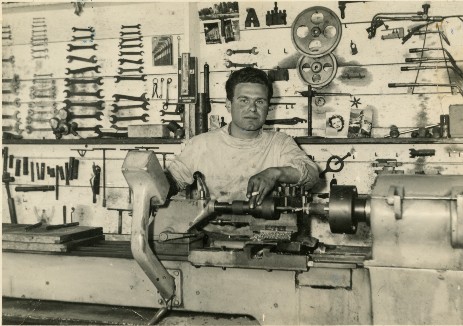OUR HISTORY
COMPANY
The Spina family has inextricably linked its name since the end of the nineteenth century to the craft activity closely connected to the primary activity, agriculture. Activity from which the ns. territory drew sustenance and subsequently well-being. A consolidated family tradition dates back to 1887 the start of the blacksmith activity of the progenitor, Vincenzo Spina, blacksmith, born in Casalnuovo Monterotaro on 6 October 1862 (died 30 May 1931). The fascist period with the emphasis placed by the government on the expansion of the area planted with wheat, the evolution in processing techniques and the start-up of major land reclamation works laid the foundations for an increase in activity. The blacksmith-blacksmith activity continued with his sons Pasquale and Pietro Spina in the 30s and 40s with the small workshop of a few square meters at the C.so Umberto I. Later the activity was carried out by the German Pietro Spina (years 50 and 60) in the small shop located in the basement of Largo Trieste where, in addition to the typical activity of the blacksmith, iron plows were built to replace the old wooden plow. In these years the craft activity evolved: the plow models with animal traction were joined and gradually replaced the mechanical traction plows. The market for soil preparation equipment began to emerge. The plow was innovating more and more; the rudder plows began to be built, which the farmer piloted by adjusting the plowing depth and then the one with the front axle (trolley placed between the implement and the animals) to prevent the animals from supporting the weight of the structure and concentrating the forces only on traction . The evolution in processing techniques and the start-up of major reclamation works laid the foundations for an increase in activity. The transition from animal traction to mechanical traction begun in the 40s continued in the 50s and 60s. The Spina workshop in those years also became a school of professional maturation for many young Casalnovesi and Casalvecchiesi.
n the 60s the third generation appeared at the helm of the business with the two Germans Vincenzo and Franco, sons of Pietro Spina, who transformed the small village workshop into a small-scale artisanal activity with the first production site of 600 square meters . (YEAR 1971).
Despite the scarcity of resources, the commercial skills and Franco's intuition in identifying the innovations that came from USA and Northern Italy (Mecc Kormicc, Nardi, Toselli) and the innate craftsmanship of his brother Vincenzo, they did seize the few opportunities offered by life to improve its entrepreneurial activity of an artisanal nature thanks to the construction of the first crop breakers and seed drills.
Not of secondary importance at the time for the small artisan business was the repair and marketing of American harvesters produced in Chicago. (MecCormick, Frost & Wood Company etc.). Nowadays we receive certificates of gratitude for being able to be the first in the area (province of Foggia and Campobasso) to field and repair harvesters.
The 60s were the years of greatest economic progress where machine and equipment innovation was required. Continuous innovation led the brothers to improve their economic and social conditions; consequently strong in the affirmation of the product (frangizolle) and some other small agricultural equipment, in the 70s they built the first equipped workshop of about 400 square meters. on the provincial nr. 5 Casalnuovo-Lucera in the territory of Casalvecchio di Puglia where processing was no longer carried out on commission but in small series.
In 1981 the business continued with Franco, who, together with his spouse, Maria Tusino, bet on relaunching the family business from an interregional point of view with a new brand: COMAS acronym for COstruzione Macchine Agricole Spina on a covered surface of 400 square meters then expanded several times in twenty years up to 1600 square meters.
Spina Franco was born in 1937. His biography is inextricably linked to the craft activity that he actively lavished for 43 years from 1961 to 2004. At the age of 13 he left school before taking the entrance exam for middle school; the family directed him to a seminar with the same result: he abandoned his studies and returned to the village to then emigrate. After some little work experience in Genoa in a motorcycle repair shop and some other little significant work experience in Germany, he decided with his older brother Vincenzo to continue the family craft activity of a small agricultural equipment manufacturer. From the outset the witty craftsman understood the potential of the workshop and provided to sustain the goodness of the product with a constant promotional action and above all with the willingness to meet the multiple needs of farmers. To this was added the undisputed commercial, administrative and communication skills of his wife Maria Tusino, daughter of peasants, with an innate propensity and entrepreneurial ability, still witnessed by the many customers and commercial partners. The latter, assisted her husband in all the most important business decisions to such an extent that he promoted a daring project for a new production plant of around 1,400 meters which were added to the existing 1,600 on a company surface of about 8,000 square meters . This to increase the range of products also in light of the fact that the market was directed towards machines and equipment of considerable size and weight.
The products to be manufactured, have led the company to consolidate its presence in the south also through participation in important fair events.
The 80s and 90s were characterized by the strong competition that jucus-force dictated the new line of action. To survive, the company had to innovate and expand the range of products. Therefore, the design of a larger and more equipped structure of approximately 1,600 square meters was started at the factory in Via Rossetti.
The 2000s repaid the efforts made and allowed to put in place new investment projects that were harnessed as well as by the October 2002 earthquake from the premature death in December 2002 from Mrs Maria, the company's tireless engine.
Needless to add that the tragic event shook the business from the ground up to such an extent that in 2004 the surviving spouse Franco ceded the business to his sons Pietro and Vincenzo who in the blackberries had entered fully into the company incorporating it by merger into current COMAS SRL joint stock company.
The fourth generation represented today by Vincenzo, an industrial expert, and Pietro, a law graduate, qualified as a lawyer and an officer of the Ministry of Justice, have, each with their own skills, assumed ownership of the company from a different perspective with the changing needs of the market looking for niche products, customized, aimed at a narrow market for a production no longer in series but on commission.
SPINA VINCENZO 1861




